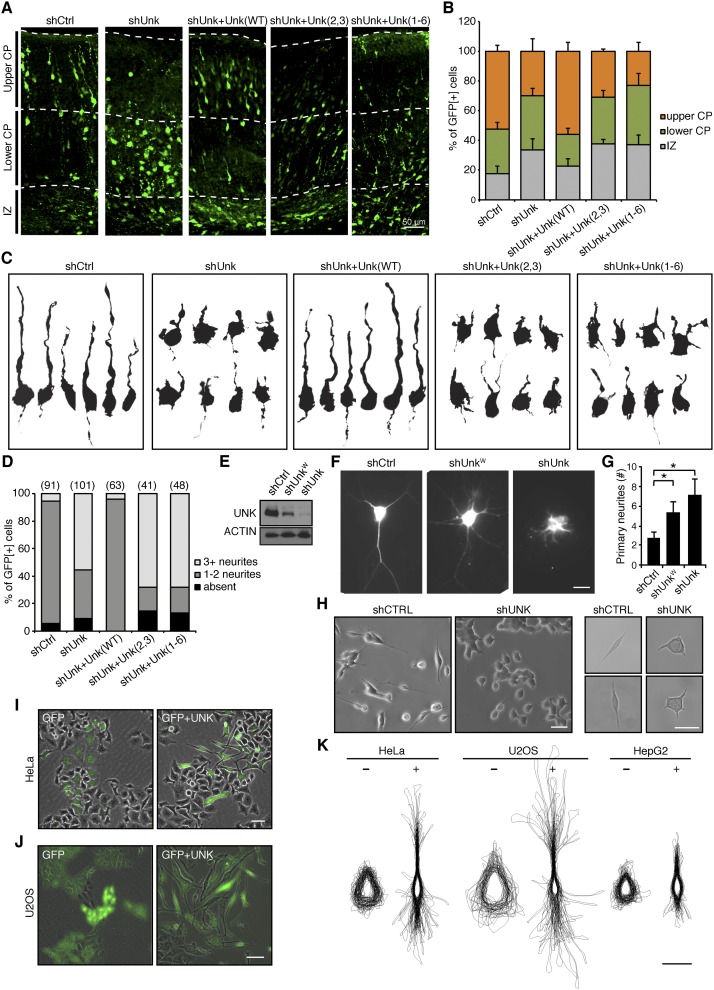Figure 2.
Unkempt is required for the early neuronal morphology and is sufficient to polarize cells of nonneuronal origin. (A,B) Impaired migration of Unkempt-deficient neurons. (A) Cortical sections of mouse embryos electroporated at E14.5 with the indicated constructs and analyzed at E19. Electroporated neurons are in green. Unk(WT), Unk(2,3), and Unk(1–6) are RNAi-resistant wild-type Unkempt, mutant missing zinc fingers 2 and 3, and mutant missing zinc fingers 1–6 (see also Fig. 3A). (IZ) Intermediate zone; (CP) cortical plate. (B) Quantification of electroporated neurons as shown in A. The data are based on the evaluation of at least 1000 cells per condition. (C,D) Morphological analysis of migrating neurons. (C) Computationally reconstructed shapes of GFP-positive neurons from the lower cortical plate of E19 embryos electroporated with the indicated constructs. (D) Quantification of GFP-positive neurons as in C by the number of primary neurites per cell. The number of cells quantified for each indicated condition is shown in parentheses above each column. (E) Efficiency of the RNAi constructs used in explanted neurons in vitro. (F,G) Impaired morphogenesis of Unkempt-depleted cortical neurons in vitro (F) with quantification of primary neurites per cell (G). (*) P < 0.001, Student’s t-test. Bar, 10 μm. (H) Representative images of SH-SY5Y cells growing in clusters (left) or individually (right). Bars, 50 μm. (I,J) GFP-inducible or GFP and Unkempt-inducible HeLa cells at 36 h (I) and U2OS cells at 72 h (J) of treatment with Dox. Bars, 50 μm. (K) Overlaid outlines of GFP-inducible (−) or GFP and Unkempt-inducible (+) HeLa, U2OS, and HepG2 cells at 72 h of treatment with Dox. Error bars represent SD. Bar, 25 μm.

